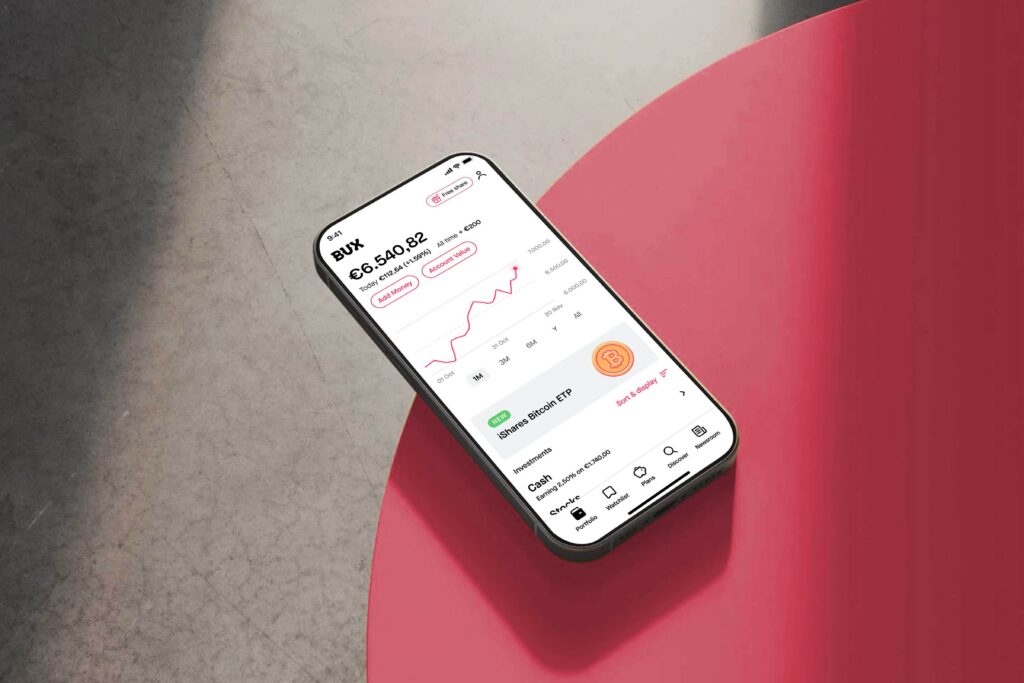
Invest in Exchange-Traded Products (ETPs)
Invest inETPs are financial instruments that let you gain exposure to a specific asset — such as a stock index, commodity, or cryptocurrency — without owning it directly. They are traded on stock exchanges, just like regular shares.
There are several types of ETPs, including ETFs (Exchange-Traded Funds), ETCs (Exchange-Traded Commodities), and ETNs (Exchange-Traded Notes).
Not a BUX investor yet? Create your account
How ETPs work
ETPs are issued by financial institutions. Each ETP follows the price of its underlying index (e.g., S&P 500) or asset (e.g., gold, oil, or Bitcoin). When the index or asset price goes up or down, the ETP’s value typically moves in the same direction.
Next to ETFs, there are two main types of ETPs available on BUX:
- ETCs (Exchange-Traded Commodities): Track the price of commodities like gold, silver, or oil.
- Physically backed ETCs hold the actual commodity in storage (for example, real gold bars).
- Synthetic ETCs use financial contracts, known as derivatives, to mimic the price of the commodity.
- ETNs (Exchange-Traded Notes): Are debt instruments that track the price of an asset or index. This means issuers do not hold the underlying asset directly but commit to paying investors a return that matches its performance. Most crypto ETPs fall into this category.
You can trade ETCs and ETNs through your BUX account during regular stock market hours — just like a stock or an ETF. For some, you’ll need to pass a short appropriateness test to confirm your understanding of how these products work and the risks involved before investing.
Why Investors Use ETPs
Because they trade on stock exchanges, ETNs make it easier to get exposure to assets that are otherwise hard to access.
For example:
- ETCs let you invest in physical commodities, like gold and silver, without physically owning them.
- Crypto ETPs let you gain exposure to cryptocurrencies without using crypto exchanges or wallets.
All ETNs available on BUX are issued by supervised financial institutions and traded on regulated European exchanges.
Key Risks to Understand
Investing in ETPs comes with unique risks. You’re simultaneously exposed both to the risks of the underlying asset the ETP tracks (for example, commodities or crypto) and to risks that are specific to the structure of the ETP itself. Before investing, we strongly encourage you to make sure you understand these risks. Please read Sections 4 and 5 of our Risk Disclosure, which explain the risks of both ETPs generally, and Crypto ETPs respectively in detail.


